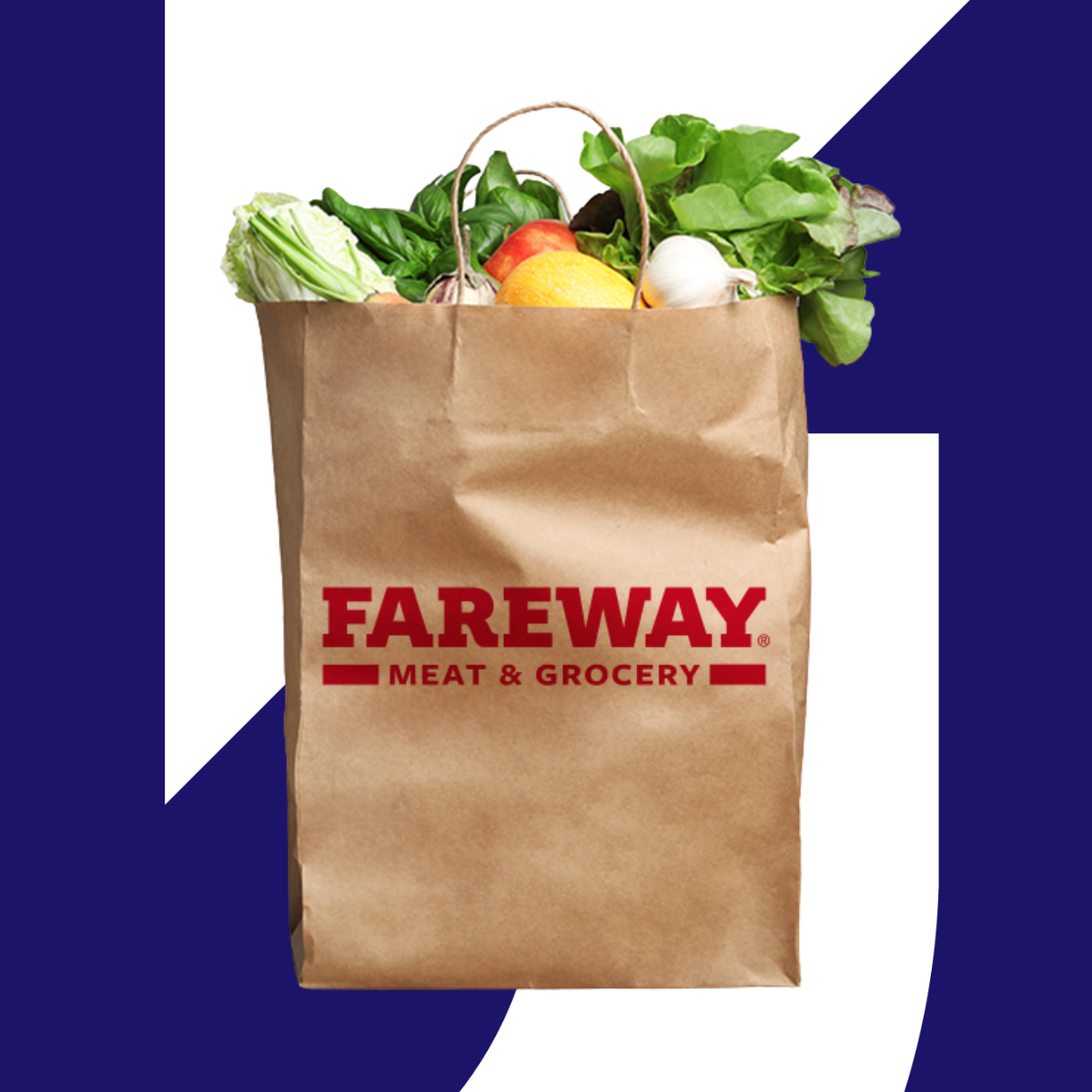How to improve restaurant sales: Proven strategies for success

The Upside Team
The restaurant industry faces many challenges. Rising food costs, labor shortages, and shifting consumer behaviors have created a complex operating environment where traditional approaches to driving sales may fall short. Many restaurant operators find themselves working harder than ever while struggling to see meaningful growth in their bottom line.
Yet some restaurants are thriving. They've discovered strategies that build sustainable, long-term growth. The difference isn't luck; it's understanding which approaches move the needle and implementing them strategically.
Understanding restaurant's sales challenges
Before diving into solutions, it's important to recognize the sales challenges that are affecting restaurants across the industry. These aren't isolated problems, but rather, they're widespread issues that require strategic thinking to overcome.

Customer acquisition has become more expensive
Restaurant marketing costs have risen significantly over the past few years. Traditional advertising channels that once delivered reliable results are now requiring higher investments for the same return.
This trend affects restaurants of all sizes, from independent operators to large chains interested in attracting more customers to their restaurants in a competitive market.
This trend affects restaurants of all sizes, from independent operators to large chains interested in attracting more customers to their restaurants within a competitive market. The competition for customer attention has intensified, and consumers have more dining options than ever before. Meanwhile, digital marketing costs continue to climb as more businesses compete for the same online real estate.
Customer loyalty isn't what it used to be
Today's diners behave differently than they did even five years ago. They're increasingly willing to try new restaurants, compare online ordering options on their phones, and make last-minute decisions about where to eat based on convenience, value, and availability rather than brand familiarity alone.
This shift means that winning a customer once doesn't guarantee their return. Even satisfied diners might choose a competitor for their next dining experience if the competing restaurant offers better perceived value or convenience at that moment. Building sustained customer relationships requires more intentional effort than ever before.
Capacity utilization remains a major opportunity
Many restaurants operate well below full capacity, especially during off-peak hours and slower days of the week. This underutilized capacity represents one of the biggest opportunities for sales growth, since the infrastructure and staffing are already in place to serve more customers.
The challenge is attracting diners during these slower periods without eroding the profitability of your peak hours. Many restaurants struggle to find the right balance between offering attractive incentives and maintaining healthy margins across all time periods.
Digital expectations continue to evolve
Modern consumers expect easy digital experiences throughout their dining journey. They want to discover restaurants on their phones, easily access promotions, and feel confident about their dining choices before they arrive. Restaurants that don't meet these digital expectations often lose potential customers to competitors who do.
However, navigating the digital world can be complex and expensive. Many restaurant operators find themselves spread thin across multiple platforms, struggling to track which digital investments actually drive measurable results and which do not serve their bottom line.
Economic pressures affect spending patterns
Inflation and economic uncertainty have made diners more selective about their restaurant spending. While many consumers still want to dine out, they're more likely to comparison shop and look for value. This creates pressure on restaurants to justify their pricing while still maintaining profitability.
Successful restaurants are finding ways to provide clear value to their customers without engaging in destructive price competition. They're focusing on strategies that enhance the overall value proposition rather than simply cutting prices.
Proven strategies to increase restaurant sales
Whether your restaurant struggles with its table turnover rate or you are simply looking for new sales ideas, here are strategies to consider.
Fill your unused capacity with personalized promotions
Your restaurant's greatest asset might also be your biggest opportunity. As mentioned, many restaurants operate significantly below capacity, especially during off hours. Rather than accepting this as inevitable, look at it as an opportunity to use promotions to drive traffic.
Strategic customer segmentation can drive real results:
- Time-based incentives for new customers: Offer compelling promotions to first-time visitors during your slower hours, when you have the capacity to provide excellent service that encourages return visits.
- Frequency-building offers for existing customers: Create incentives that encourage your regular dinner customers to try lunch, or motivate weekend visitors to come during weekdays.
- Specialized promotion levels: Rather than offering the same discount to everyone, tailor your incentives based on customer behavior and visit frequency. A regular customer might need only a small incentive to try a new menu item, while a new customer might require a more substantial offer to choose your restaurant over a competitor.
Automated personalization platforms handle all the targeting and offer delivery — restaurants don't create segments or manage promotions.
Leverage digital platforms that reach customers during decision-making
A lot of restaurant marketing tactics reach customers after they've already decided where to eat. The most effective digital strategies intercept customers earlier in their decision-making process — when they're still choosing between options.
This means going beyond social media posts and traditional advertising to reach customers on platforms they use when planning their meals. Successful restaurants are partnering with digital marketplaces and apps that connect with consumers at the moment they're deciding where to dine.
The most effective digital strategies share several characteristics:
- Reach customers during active decision-making: Rather than hoping customers remember your restaurant when they're hungry, these platforms connect with people who are actively looking for dining options.
- Provide clear value propositions: Customers can immediately see what makes your restaurant worth choosing over nearby competitors.
- Integrate with existing operations: The best digital partnerships don't require new systems or change how you operate. They work with your current point-of-sale systems and payment processing.
- Deliver measurable results: You can track exactly which customers came from digital channels and calculate your return on investment based on actual transaction data.
Focus on customer acquisition and retention simultaneously
Many restaurant marketing strategies focus exclusively on either winning new customers or encouraging repeat visits from existing ones. The most successful approaches do both simultaneously, creating compounding value that drives growth.
This dual approach works because it addresses the reality of modern dining behavior. Even loyal customers are willing to try competitors, so retention requires ongoing effort. Meanwhile, new customer acquisition becomes more cost-effective when you're also increasing the lifetime value of existing customers.
Effective strategies that serve both goals include:
- Marketplace participation: Joining digital platforms that expose your restaurant to new customers while providing ongoing value to existing ones creates continuous discovery and re-engagement opportunities.
- Layered incentive programs: Rather than relying solely on traditional loyalty programs, consider combining multiple approaches that provide value to customers at different stages of their relationship with your business.
- Behavioral targeting: Using data to understand why customers visit (or stop visiting) allows you to create offerings that both attract new diners and re-engage lapsed ones.
The restaurants that tend to see stronger results are often those that can track and measure the impact of their efforts on both new customer acquisition and existing customer behavior changes. This typically requires moving beyond simple metrics like total sales to understand which customers are truly incremental to your business.
Implement profit-focused measurement systems
Measurement can be one of the key factors that separates highly effective restaurant marketing from less productive investments. While metrics like social media engagement and email open rates provide valuable insights into customer engagement, they don't always tell the complete story about financial impact.
Profit-focused measurement adds an additional layer by helping you understand not just whether your marketing is driving sales, but whether those sales are incremental and profitable. This distinction can be important because some marketing channels may receive credit for sales that would have occurred through other means.
Key components of effective measurement include:
- Attribution tracking: Understanding which marketing touch points actually influenced customer decisions, not just which ones were present before a sale.
- Incremental analysis: Comparing the behavior of customers exposed to your marketing against similar customers who weren't, to isolate the true impact of your efforts.
- Profit calculation: Measuring return on investment based on incremental profit, not just revenue, since some promotions might drive sales while eroding margins.
- Customer lifecycle tracking: Following individual customers over time to understand how marketing affects their visit frequency, average spend, and long-term value.
Explore more marketing ideas for restaurants.
How Upside helps restaurants implement these strategies
While understanding effective strategies is important, implementation often presents the biggest challenge. Upside addresses these challenges by providing a comprehensive platform that works alongside your existing systems — and it's easy to set up.
Personalized promotions that drive incremental visits
Upside creates individualized cash back offers for each customer, automatically calibrating promotions to influence behavior while protecting your profit margins. New customers receive compelling offers to choose your restaurant over competitors, while existing customers get personalized incentives to visit more frequently. All offers are bound by your available margin and adjust dynamically as costs change.
Seamless integration with current operations
Unlike traditional restaurant marketing software that requires complex integrations, Upside requires no software integrations, staff training, or point-of-sale changes. Customers claim offers in the app, pay with their regular cards, and receive cash back after transaction verification. From your perspective, these customers behave exactly like any others — no special procedures or operational disruption.
Marketplace reach and proven measurement
Upside's marketplace connects to over 35 million consumers through the app and partner network, extending your reach far beyond traditional advertising. The platform uses rigorous test-versus-control analysis to prove incremental impact, showing exactly which sales are attributable to Upside versus coincidental with it.
You get real-time dashboard access to monitor incremental transactions, customer behavior changes, and profit impact — allowing confident decisions about scaling successful marketing investments.
Ready to fill your unused capacity with profitable customers? Request a demo to see how Upside can drive measurable growth for your restaurant without changing how you operate.
Frequently asked questions
What's the difference between restaurant revenue and profitable revenue?
Restaurant revenue includes all sales, while profitable revenue focuses specifically on incremental sales that are directly attributable to your marketing efforts and generate positive returns after accounting for acquisition costs. This distinction is crucial since many marketing channels claim credit for sales that would have happened anyway.
How do I measure if my restaurant marketing is actually working?
Track incremental impact by comparing the behavior of customers exposed to your marketing against similar customers who weren't, to isolate the true effect of your efforts. Focus on metrics like incremental transaction count, incremental profit per customer, and customer lifetime value changes.
Should I focus on getting new customers or keeping existing ones?
The most successful restaurant marketing strategies do both simultaneously. The best approaches attract new customers while increasing visit frequency and spending among current customers.
How can small restaurants compete with large chains for customer attention?
Small restaurants can compete effectively by leveraging personalization and local market knowledge that large chains often struggle to match. Digital platforms that connect restaurants with nearby consumers during decision-making moments provide access to exclusive customer reach.
Share this article:
The Upside team is made up of data scientists and industry experts who are passionate about delivering empowering content to our readers. With a focus on providing practical insights and meaningful perspectives, we create engaging materials across a wide range of topics. From exploring industry trends and offering expert analysis to sharing useful tips and inspiring ideas, our team works diligently to provide you with the information you need to thrive.
Request a demo
Request a demo of our platform with no obligation. Our team of industry experts will reach out to learn more about your unique business needs.









.png)





